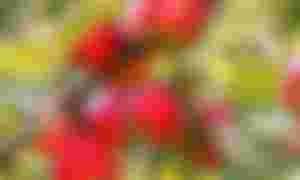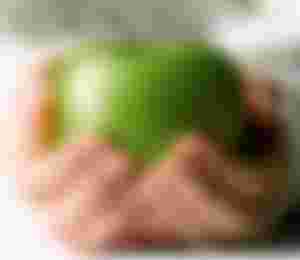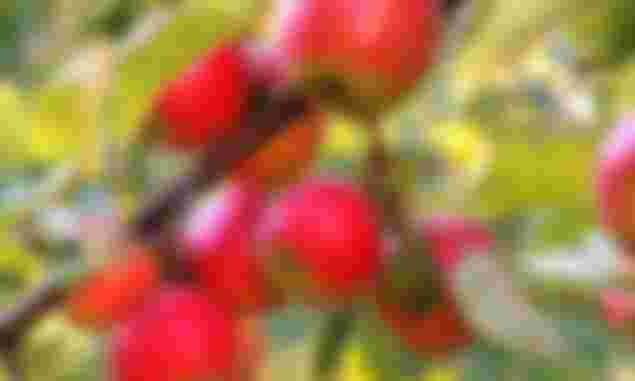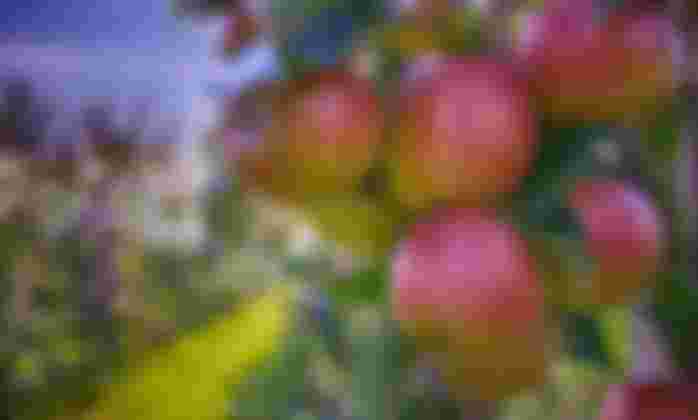The Magic of Plants. A touching tale of an apple tree.
A touching tale about an apple tree
There lived a wild apple tree in the forest....
And the apple tree loved the little boy.
And the boy would run to the apple tree every day, collect the leaves that fell from it, weave a wreath of them, put it on like a crown and play the king of the forest. He would climb up the trunk of the apple tree and swing on its branches, and gnaw at its apples. And then they would play hide-and-seek, and when the boy got tired, he would fall asleep in the shade of the apple tree. The boy loved his apple tree, he loved it very much! And the apple tree was happy... . But as time passed and the boy grew older, the apple tree spent more and more days alone. But then one day the boy came to the apple tree. And the apple tree said:
- Come here, little boy, come quickly, swing on my branches, eat my apples, play with me, and we will be fine!
- I'm too old to climb trees," replied the boy. - I'd like other activities. But that requires money, and can you give me any?
-I would be glad to, - sighed the apple tree, - but I have no money, only leaves and apples. Take my apples, kid, sell them in town, then you'll have money. And everything will be all right.
And the boy climbed up the apple tree and picked all the apples and took them away with him. And the apple tree was happy. After that, the boy didn't come back for a long time. And the apple tree became sad again. And when the boy came one day, the apple tree trembled with joy:
- Come here, boy! - She exclaimed. - Come quickly! Wiggle on my branches, and we'll be fine!
-I have too many worries to climb trees, - replied the boy, - I would like to get married, to have children. But you need a home for that, and I don't have one. Can you give me one?
- I wish I could," sighed the apple tree, "but I do not have a home. My forest is my home. But I have branches you can cut down and build you a house. And all will be well!
And the boy, cut down her branches and took them away with him, and built himself a house. And the apple tree was happy. After that the boy did not come back for a long, long time. And when he came, the apple tree was almost numb with joy.
- Come here, boy," she whispered, "play with me!
- I am too old," answered the boy, "and I am too sad to play. I would like to build a boat and sail it far, far away. But can you give me a boat?
-Saw down my trunk and make yourself a boat," said the apple tree, "and you can sail it far, far away. And all will be well!
So the boy sawed down the trunk, made a boat out of it, and sailed away. And the apple tree was happy. Though it is not easy to believe.
A long time passed. And the boy came to the apple tree again.
- I'm sorry, little one," the apple tree sighed, "but I can't give you anything else. I don't have any apples.
- What do you want apples for? - answered the boy. - I have almost no teeth left.
- I have no branches, nothing to swing on... .
- I'm too old to swing on branches.
- And my trunk is gone, there's nothing to climb... .
- I am too weak to climb trunks.
- It's too bad there's nothing I can do for you," the apple tree sighed. - I'm just a gaunt stump. I'm sorry, baby.
- How much do I want now? - said the boy. - I'm so tired! I wish I could find a little nook and rest...
- That's good," said the apple tree, "that's what the old stump is good for. Sit on me, boy, sit down and rest ...
And so the boy did. And the apple tree was happy...

🍎Yes, we should learn to be generous and unselfish, because life is given to us for good deeds.🍎
Many legends and myths have been created by different peoples about the apple tree and its fruit, and harvest days have become festivals. In ancient Hellas, for example, the apple was considered a symbol of love and was dedicated to Aphrodite, the goddess of beauty. Ancient Germans believed that these trees were under the patronage of all the gods - even lightning could not touch them, and therefore surrounded their homes with apple orchards.
The apple represents temptation, the Fall of man and salvation. Since the Middle Ages it has symbolized forbidden fruit. But the Bible text does not specifically mention which fruit led Eve into temptation (art has depicted figs, peaches, and quinces in addition to the apple). Traditional association with the apple As a symbol of Christ, the "new Adam," the apple symbolizes the atonement for sin and thus salvation. The apple is also associated with health and vitality, according to the old saying, "An apple for dinner and all disease is gone." In Scandinavian mythology, the gods eat apples, which grow in the gardens of their legendary Asgard and Iria Apple blossoms symbolize eternal youth and fertility, and in China, peace and beauty.
The apple is one of the most wonderful fruits, because it is a wonderful combination of the most wonderful symbolic meanings. In ancient cultures the apple was a symbol of spring, blossom and fertility. In China, the apple tree is the national symbol of peace, and the apple blossom is a poetic emblem of beauty.
In the mythology of many nations it is the apple as a symbol of eternal youth, longevity and immortality.
In Celtic mythology, the fabulous island of Avallon appears. On Avallon, the mythical "island of the blessed", lost somewhere among the distant "Western Isles", lived beautiful women who treated sailors who happened to come to them with wonderful apples of immortality.
In Norse mythology the eternally young goddess Idunn is the keeper of golden "rejuvenating" apples. The gods who tasted her immortal fruit preserved their strength, youth and beauty forever.
Russian fairy tales tell about the golden "rejuvenating" apples, as well as tales of other Slavic peoples.
But there are no rules without exceptions, and such exception to the general rule, representing an apple in a negative light, we find in the richest Greek mythology. The envious goddess of strife, Erida, tossed a golden apple with the inscription "Most Beautiful" into the crowd of merry gods who were feasting at the wedding of Peleus and Thetis. The three beautiful goddesses, Hera, Athena and Aphrodite, argued about which of them should have the prize. The fierce dispute was resolved at their request by the beautiful Trojan prince Paris, who gave the golden apple to Aphrodite, the goddess of love and beauty. Nevertheless the spiteful Erida achieved her goal: the apple sowed the seeds of envy and violent hatred among the inhabitants of Olympus. It was also the cause for a long and bloody war between the inhabitants of Olympus.
The Trojan War, in which both gods and men were involved. Since then, the proverbial apple, afflicted with the wormhole of discord and possessing a putrid taste of death, has become an emblem of conflict.
But even this story could not completely ruin the reputation of the miraculous fruit. In the hands of the beautiful Aphrodite, the golden apple absorbed all the best that came from it, becoming a beautiful romantic symbol of love, erotic pleasure and marriage.
In a curious way, the positive and negative symbolism of the apple are intertwined in the biblical myth of the fall. The serpent tempter persuaded Eve to taste the forbidden fruit, and as a result people were expelled from the Garden of Eden. But, having lost their pious, tranquil and meaningless existence, they instead gained knowledge and for the first time looked at the immense world with wide-open eyes, for the forbidden apple was growing in the Tree of Knowledge of Good and Evil. Thus, already at the dawn of human history, the apple becomes the greatest symbol of knowledge.
In Renaissance art, the biblical apple of knowledge in the mouth of the serpent or in the mouth of the monkey symbolizes original sin.
The golden apple which Paris gave to Aphrodite is an attribute not only to the beautiful goddess herself, but also to her charming servants, the Graces.
The personified figure of Vigilance owns the golden apple on the grounds that in the gardens of the Hesperides the fruit of immortality was guarded by a watchful dragon who never shut his watchful eye day or night, The allegorical Stinginess cherishes the precious golden apple as an embodiment of her avarice, much like the Stingy Knight who with trembling hand examines the gold coins in the cellars of his castle or fairytale tsar Koshchei who "pines over the gold".
In iconography, the apple in Christ's hands is one of the symbols of salvation. One of the Christian feasts, the Apple Feast, is also associated with this symbolic interpretation.
A basket full of apples and roses is an attribute of the Christian virgin martyr Dorothea.

According to church legend, Dorothea was condemned to death in 303 by the Roman governor Fabritius for refusing to renounce faith in Christ. One of Dorothea's executioners, Theophilus, mocking her fanatical faith, jokingly asked the saint to send him apples and roses from the heavenly gardens of Christ. Some time after Dorothea's execution, a rosy-cheeked cherub appeared before the astonished Theophilus with a basket full of apples and roses. Amazed by this miracle, Theophilus was immediately baptized.
For the alchemists, the apple symbolized the process of knowledge and the fantastic fifth element. The latter meaning was that the medieval sages saw in the core of a cut apple a kind of five-pointed form expressing the mystical quintessence.

The apple is also a symbol of knowledge in the history of scientific thought. It was the apple that fell on Isaac Newton's head that made him think about the problem of the Earth's gravitation, as a result of which the great scientist discovered the universal law of universal gravitation.
The emblem of the apple is rarely used in heraldry. As an emblem of wealth, for example, six golden apples adorn the coat of arms of the Russian noblemen Daudov.
The apple is often used as a symbol of settled, settled life and prosperity. Sometimes this tree, which gives abundant yields, is regarded as a symbol of fertility, maternity and maternal blessing. This attitude to the apple tree is clearly demonstrated in Russian folk tales "Khavroshechka" and "The Swan-Goose".
In Christian symbolism, the apple tree often serves as an emblem of temptation and unauthorized deeds. In paradise - it is the tree of knowledge of good and evil, the fruit of which Adam and Eve tasted. The cross of Jesus is believed to have been made from the wood of an apple tree as a substitutionary sacrifice for Adam, who had accepted sin from that tree. After Christ's death, the cross became a symbol of resurrection and the apple became a symbol of the Savior.
According to Russian tradition, the malting apples had great power: they could not only give health and youth, but also to bring life back to the deceased. The apples grew in a faraway land and were guarded by evil giants or dragons. In Slavic mythology, all approaches to the Irian garden, the Alatyr Mountain and the apple tree with the golden apples are guarded by griffins, basilisks. Whoever tastes the golden apples will get eternal youth and power over the universe. And the tree itself with the golden apples is guarded by griffins and the dragon Ladon himself.
It has been known since time immemorial that the apple tree is the tree of feminine power. The fruit of the apple tree has long been used as a love potion.
Apples and branches of an apple tree play an important role in wedding ceremonies of Slavs. An apple has served as a sign of love - a boy and a girl exchanged fruits to express their mutual sympathy, to declare their love publicly. An apple accepted by a girl during matchmaking is a sign of consent to marriage. Southern Slavs invite people to the wedding, bringing apples to homes.
An apple branch is used in making a wedding banner, a tree. Apples are reinforced in a bride's wreath. The Poles and Ukrainians stick apple branches into a loaf, and Russians - into a baked wedding hen. The South Slavs used to take an apple with them when they went to the wedding ceremony. In the church after the wedding she would throw an apple behind the altar to have children.
On their wedding night they put one apple under the featherbed and broke the other into halves, and each of the newlyweds ate half of it. The apple was a symbol of the bride's chastity: it was placed on her wedding shirt or in a sieve instead. Under an apple tree in the southern Slavs there was a ceremonial shaving of the bridegroom before the wedding. When the bride's headdress was replaced by a married woman's headdress, the veil was removed from her head with an apple branch and thrown on the apple tree.

An apple is the embodiment of fertility: it was placed in the seed, so that wheat would grow as large as apples, and to protect crops from plundering.
The last Apple was not plucked from the tree: it was left on a branch so that there would be a harvest next year.
In Slovakia, a young housewife, on arriving at her new home, would turn over a basket full of apples so that there would be abundance in the household.
An apple that originated after the second flowering of an apple tree, or the first one on a young tree, or that hung on an apple tree for a long time, helped against infertility.
The apple is associated with the world of the dead, and plays a significant role in funeral rites: it was placed in the coffin, in the grave, so that the deceased would take it to "the other world" to the ancestors. In Bulgarian beliefs Archangel Michael took a soul to heaven only with an apple. An apple on the table on Christmas Eve was intended for the dead, so in Poland, fearing the vengeance of the ancestors, it was forbidden to take apples from the Christmas tree.
The apple tree acts as a mediator between the two worlds, as a link in communicating the soul to the world of ancestors. In Serbia and Bulgaria, a small apple tree was carried in front of the coffin, planted on the grave (instead of the cross), so that the dead could communicate with the living through it. It was believed that the tree was with the deceased on the road until his transition to the "other world". When the apple tree dried up, it meant that the soul reached paradise.
It was believed that before the Apple Feast, that is, before the consecration of apples, the apple tree was inhabited by mermaids, devils. Apples were consecrated in church on Transfiguration (Apple Feast) and only after that it was allowed to eat them.
In addition, apples are used to remove warts, rather magical than medical methods. In an apple cut horizontally in half, a five-pointed star is visible, and the wood and flowers of the apple tree are used in love witchcraft.
Photo: pixels.com yandex.com
I thank God for his help in writing this article, and you, dear readers, praise him if your reading has been helpful to you.
If you are interested in my content,then I invite you to read my other articles:
https://read.cash/@Belozoriana/onion-and-garlic-jam-f71c50ef
https://read.cash/@Belozoriana/forest-glade-themed-cake-b6adf80b
https://read.cash/@Belozoriana/we-eat-to-live-not-live-to-eat-5fc88f83
https://read.cash/@Belozoriana/choice-or-a-reaction
https://read.cash/@Belozoriana/gravlax-or-they-are-not-rolls-fb460b64
Good luck to you readers read.cash🖐




Amazed with the description of apple. You connected it with our daily stories.